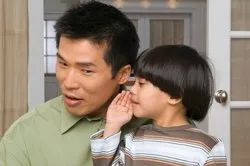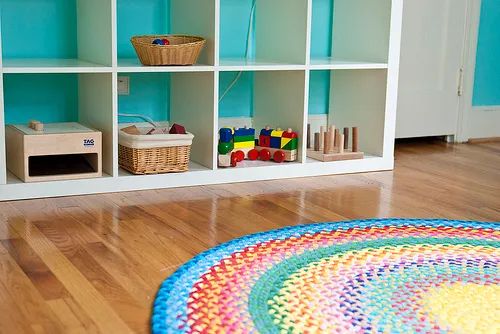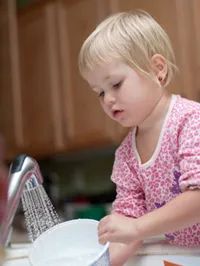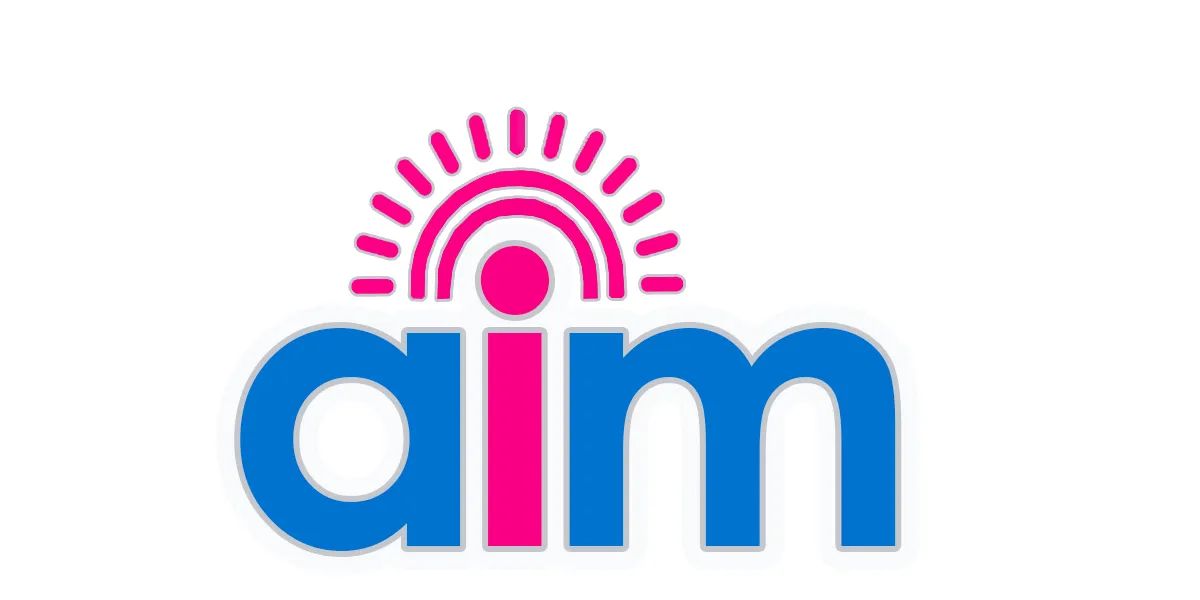Los diez secretos de Montessori - #6 El entorno preparado
"El primer objetivo del entorno preparado es, en la medida de lo posible, independizar al niño en crecimiento del adulto". -Maria Montessori
María Montessori descubrió secretos, diez para ser exactos. Por suerte para nosotros, Mary Ellen Maunz, M. Ed., fundadora y Directora de Programas de Age of Montessori, está dispuesta a compartir el tesoro de información que encierran estos secretos, y a explicar exactamente lo que pueden significar para usted y sus hijos. Con estos diez secretos, usted obtendrá una rica comprensión del marco que subyace al Método Montessori. María Montessori desarrolló algo más que un método educativo revolucionario: descubrió el verdadero funcionamiento interno de la mente del niño. Estos diez secretos se basan en su vida de observación de los niños y en el reconocimiento de lo que realmente necesitan para prosperar.

Secreto nº 6: El entorno preparado
Uno de los principios fundamentales del método Montessori es la cuidadosa preparación del entorno del niño.

Uno de los principios fundamentales del Método Montessori es la cuidadosa preparación del entorno del niño. En pocas palabras, esto significa que el niño debe tener acceso a las herramientas adecuadas, en el momento adecuado. Como explicó María Montessori, "Lo más característico de nuestro sistema educativo es el énfasis que se pone en el entorno". Por supuesto, esto sólo puede lograrse comprendiendo las necesidades de desarrollo del niño y sabiendo qué materiales o actividades satisfacen qué necesidades de desarrollo.
Las aulas Montessori están diseñadas para ofrecer lecciones, actividades y herramientas que coincidan con las necesidades de desarrollo y los intereses de cada niño. Es importante tener en cuenta que no todos los niños estarán interesados en todas las lecciones disponibles. Por eso se permite a los niños elegir las lecciones hacia las que se inclinan de forma natural.
Los obstáculos deben reducirse al mínimo y el entorno debe proporcionar los medios necesarios para el ejercicio de aquellas actividades que desarrollan las energías del niño. ~Maria Montessori
El papel del profesor es observar los intereses de cada niño y su progreso a lo largo de la lección. Cuando es necesario, el profesor orienta o ayuda al niño a conectar con el material didáctico. Basándose en esta interacción con los niños, los profesores pueden cambiar los materiales o introducir otros nuevos.
Sólo hay una base para la observación: los niños deben ser libres para expresarse y revelar así aquellas necesidades y actitudes que de otro modo quedarían ocultas o reprimidas en un entorno que no les permitiera actuar espontáneamente. ~Maria Montessori
Las lecciones y el material didáctico del entorno preparado se colocan en estanterías bajas y de fácil acceso.
Las lecciones y el material didáctico del entorno preparado se colocan en estanterías bajas y de fácil acceso. Además de las estanterías a la altura de los niños, las aulas Montessori tienen muebles, accesorios, herramientas y utensilios del tamaño de los niños. Al mantener el entorno del tamaño del niño y accesible, el aula Montessori minimiza la necesidad del niño de la ayuda del adulto y maximiza la actividad autorregulada.
Cuando hablamos de "entorno" incluimos el conjunto de objetos que el niño puede elegir libremente y utilizar a su antojo, es decir, según sus necesidades y tendencias. Un maestro se limita al principio a ayudarle a orientarse entre tantas cosas diferentes y le enseña el uso preciso de las mismas, es decir, le introduce en la vida ordenada y activa del entorno. Pero luego le deja libertad en la elección y ejecución de su trabajo. ~Maria Montessori
Los materiales que vemos en los entornos preparados por Montessori, y esto incluye tanto las aulas escolares como las domésticas, se han desarrollado a lo largo de años de observación y experiencia, remontándose hasta la propia María Montessori. Son los mismos materiales que se utilizan en todo el mundo y año tras año porque están diseñados específicamente para satisfacer las necesidades de desarrollo de cada niño, en cada edad y etapa. Los niños eligen la lección o actividad que encaja perfectamente con el periodo sensible que están experimentando en ese momento.(Para una recapitulación sobre los periodos sensibles, haga clic aquí).
Los verdaderos materiales Montessori se presentan al niño en las Cuatro Vías de Aprendizaje: Vida Práctica, Sensorial, Lenguaje y Matemáticas.
Materiales para la vida práctica

Los materiales de la vida práctica son herramientas reales y cotidianas, a menudo a escala reducida para manos y estaturas pequeñas. Enseñan habilidades de la vida real, como barrer, fregar, lavar los platos, poner la mesa o vestirse. Los niños imitan instintivamente las actividades cotidianas que ven a su alrededor. A través de lecciones prácticas, los niños desarrollan la motricidad fina y gruesa, el equilibrio, la coordinación mano-ojo, la resolución de problemas, la independencia, la confianza y mucho más.
Materiales sensoriales
Como su nombre indica, los materiales sensoriales están diseñados para ayudar a los niños a aprender a través de los sentidos. Un estudio tras otro han demostrado que el aprendizaje sensorial es la base misma del desarrollo temprano del cerebro. Desde el nacimiento, los niños necesitan abundante información sensorial para establecer las conexiones neurológicas esenciales para la inteligencia humana. Los materiales sensoriales Montessori proporcionan una experiencia activa y práctica para los sentidos.
Materiales de Lengua y Matemáticas
Tanto la vida práctica como las actividades sensoriales ayudan a construir la infraestructura neurológica necesaria para el aprendizaje del lenguaje, las matemáticas, las ciencias y mucho más. El área de desarrollo del lenguaje comienza con el dominio temprano de la palabra hablada y pasa al aprendizaje de los sonidos individuales del lenguaje hablado, seguido del aprendizaje de las letras como símbolos de esos sonidos; a continuación, la construcción de palabras y la ampliación del vocabulario. Estas habilidades abren la puerta a la lectura, la escritura y la gramática. Los materiales Montessori clásicos para el desarrollo del lenguaje incluyen letras de papel de lija, tarjetas fonéticas y alfabetos móviles. Si desea más información sobre cómo enseñar a su hijo a leer en casa, consulte la página web Sistema de DVD Camino Real a la Lectura para padres, educadores en casa y profesores.

El método Montessori también utiliza materiales prácticos para enseñar matemáticas y ciencias. A través de materiales como las clásicas cuentas doradas, las varillas numéricas y las cajas de huso, los niños aprenden los conceptos matemáticos y científicos básicos. Estos conceptos, a su vez, preparan al niño para lecciones más avanzadas.
Para obtener información sobre cómo los padres pueden cosechar las muchas recompensas del ambiente preparado Montessori en casa, por favor siga este enlace. O aprenda más sobre el ambiente preparado en este seminario en línea gratuito de Age of Montessori: Montessori en el Hogar.
Repetición del seminario web:
Aprenderás a:
- Aumente la armonía en su hogar
- Fomente el amor de los niños por el orden y mantenga su casa más ordenada
- Satisfacer mejor las necesidades de las etapas de desarrollo de sus hijos
- Preparar el entorno para satisfacer los periodos sensibles de los niños
- Descifrar el código de la comunicación oculto tras el "mal comportamiento"
- Involucre a sus hijos de forma eficaz mientras hace crecer su cerebro y su autoestima.
Presentadores:
Jennifer Williams, Fundadora de Heartmanity
Nancy McNabb, Directora de Middlecreek Montessori School




















